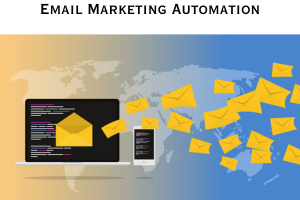Case Study: Dollar Shave Club’s “Our Blades Are F***ing Great” Video
In 2012, Dollar Shave Club, a subscription-based razor and grooming products company, released a humorous and irreverent video titled “Our Blades Are F***ing Great.” The video featured the company’s founder, Michael Dubin, delivering a witty and memorable pitch for their affordable razor subscription service. Here’s how Dollar Shave Club’s viral video transformed its marketing efforts:
- Unique Brand Identity: The video showcased Dollar Shave Club’s distinct brand identity, marked by humor, transparency, and disruption in the shaving industry. The unapologetic and unconventional approach immediately resonated with viewers, setting the tone for the company’s marketing strategy.
- Widespread Sharing and Engagement: The video quickly went viral, with viewers sharing it across social media platforms and through word-of-mouth. Its humorous and relatable content prompted discussions and sparked conversations among friends, family, and colleagues, amplifying the company’s message and attracting a broader audience.
- Increased Subscriptions: The viral video with local SEO directly translated into increased subscriptions for Dollar Shave Club. The video effectively communicated the company’s value proposition, highlighting its affordable pricing, convenience, and quality razors. The viral buzz and positive reception led to a surge in sign-ups, driving business growth and establishing Dollar Shave Club as a significant player in the grooming industry. It is important to learn what is seo in digital marketing to be able to completely gain the benefits from this.
- Media Attention and Publicity: The video’s viral success garnered significant media attention, leading to coverage in numerous news outlets and online publications. Journalists and influencers praised the video’s creativity and marketing effectiveness, further boosting the company’s exposure and credibility.
- Brand Loyalty and Customer Advocacy: The video’s unique humor and brand voice resonated with the audience, fostering a sense of connection and loyalty. Dollar Shave Club’s customers became passionate advocates, spreading the word about the company and referring others to join the subscription service. This customer advocacy further fueled the brand’s growth and solidified its position in the market.
- Long-Term Impact: The viral success of the video had a long-lasting impact on Dollar Shave Club’s marketing strategy. They continued to create engaging and humorous content, leveraging their brand personality to maintain customer engagement and expand their product offerings. The viral video became a foundational element of their brand identity and played a significant role in their subsequent marketing campaigns.
Conclusion:
Dollar Shave Club’s viral video demonstrated the power of engaging, humorous content in transforming marketing efforts.The importance of content for articles is crucial. By boldly showcasing their brand personality, the video resonated with viewers, leading to widespread sharing, increased subscriptions, and substantial media coverage. The viral success not only elevated Dollar Shave Club’s brand visibility but also fostered brand loyalty and customer advocacy. This case study serves as a testament to the impact of viral content in driving marketing success and establishing a distinct brand identity.



